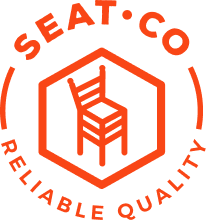Strategies for Smart Inventory Growth in the Event Rental Business
Written by: Marcelo Flores
Growing your rental inventory is a crucial decision that requires careful planning and insight. In this guide, we’ll navigate through the optimal moments and methods for expansion, ensuring your investment enhances your market presence and meets the evolving needs of your clients.
Table of Contents
1. Strategic Growth: Knowing When and Why to Expand Your Inventory
2. Assessing Your Business’s Capacity for Expansion
3. Strategic Planning for Inventory Growth
4. Calculating Expected ROI and Validating Market Interest
5. Marketing and Launching New Inventory
6. Monitoring and Evaluating the Impact of Inventory Expansion
7. Long-Term Considerations for Sustained Growth
1. Strategic Growth: Knowing When and Why to Expand Your Inventory

The Importance of Inventory Expansion in the Event Rental Industry
In the competitive event rental industry, the key to staying ahead lies in the ability to evolve and expand. Moreover, inventory expansion is about strategically enhancing your offerings to cater to diverse client demands, stay competitive, and seize new revenue opportunities. Here’s a closer look at the significance:
- Meeting Diverse Client Demands: The event landscape is ever-changing, with each event bringing its unique vision. A versatile inventory means you can cater to a wide range of events.
- Maximizing Revenue Opportunities: Every new item in your inventory opens up additional rental possibilities. Investing in high-demand, versatile pieces ensures these opportunities are not just frequent but also profitable.
- Adapting to Industry Trends: Trends dictate demand. By keeping your inventory fresh and aligned with the latest trends, you position your business as a trendsetter in the event rental market.
Recognizing the Right Time to Grow Your Inventory
Deciding when to expand your rental inventory is as critical as deciding what to add. The right timing can amplify your business’s growth potential without overstressing your resources. Here are key indicators that it’s time to invest in your inventory:
- Consistent Demand: An increase in bookings and requests for items not currently in your inventory signals a clear need for expansion.
- Market Trends: Keeping an eye on emerging trends and customer preferences can guide you in adding items that are likely to be in high demand.
- Financial Readiness: Expansion should be financially feasible. Analyzing your business’s financial health and forecasting the potential ROI from new items can help make informed decisions.
- Storage and Logistics Capacity: Ensure you have the necessary space and logistical capabilities to accommodate and maintain additional inventory without compromising the quality of your service.
*Pro Tip: Always align inventory expansion with your long-term business goals and customer feedback for the most impactful growth.
2. Assessing Your Business’s Capacity for Expansion

Financial Health Check
Before considering an expansion of your rental inventory, it’s vital to assess your company’s financial health. Also, examine your current revenue streams, expenses, and any existing debts. This financial review will help ensure that investing in new inventory won’t strain your resources.
Also consider future revenue projections and how the addition of new inventory items might impact these figures. It’s also wise to have a contingency plan in place to manage any unforeseen expenses that arise from expanding your inventory.
Identifying and Understanding Customer Demand
The success of your inventory expansion largely depends on how well it aligns with your customers’ needs and preferences. Conduct market research to identify trends and preferences within the event industry. This could involve analyzing competitor offerings, gathering feedback from your clients, and staying updated on industry reports.
Additionally, engaging directly with your clients through surveys or feedback sessions can provide valuable insights into what items they wish to see in your inventory. Tailoring your expansion to meet these identified needs ensures that your investment contributes directly to increased bookings and customer satisfaction.
Operational Readiness and Infrastructure
Expanding your inventory requires more than just financial investment; it also demands an evaluation of your operational capabilities. Do you have sufficient storage space to accommodate new items? Are your logistics and transportation systems capable of handling an increased inventory size?
Assessing your current operations to identify any necessary upgrades or adjustments is vital. This might include expanding your storage facilities, upgrading inventory management software, or even hiring additional staff to manage the increased workload.
3. Strategic Planning for Inventory Growth

Setting Clear Objectives for Expansion
Before diving into inventory expansion, it’s vital to set clear, achievable objectives. What do you aim to accomplish with the new inventory? Whether it’s entering a new market segment, catering to a broader range of events, or simply updating outdated items, having specific goals in mind guides your decision-making process.
These objectives should align with your overall business strategy and contribute to your long-term vision.
Budgeting for New Inventory
A well-planned budget is critical for any inventory expansion. It should account for the purchase costs of new items, potential upgrades to storage and transportation, and any additional operational expenses. When budgeting, also consider the financing options available to you, such as loans, leasing, or reinvesting profits.
Researching and Selecting the Right Inventory
Choosing the right items to add to your inventory involves thorough research and consideration. Look into items that have a high rental rate and can generate consistent revenue. It’s also crucial to evaluate the quality and durability of the products, as these factors directly impact your ROI.
As this is a key decision for your business, it is very important that you take the time to find the best solution. You can miss out on excellent opportunities by simply shopping around.
Integration and Implementation Plan
Once you’ve decided on the new items to acquire, developing a plan for their integration into your existing inventory is next. This plan should outline the logistics of acquiring and storing the new items, training staff on their use and maintenance, and planning for the marketing of the new items to your client base, highlighting their features and potential uses in events.
4. Calculating Expected ROI and Validating Market Interest

Requesting a Sample
If possible, request a sample of the item you’re considering adding to your inventory. Displaying it in your showroom not only allows you to assess the item’s quality and appeal in person but also gauges client interest directly. This hands-on approach can provide valuable insights into whether the item will resonate with your target market.
Promoting Before Purchasing
Utilize your digital platforms to showcase photographs or mock-ups of the potential new addition before finalizing the purchase. This strategy allows you to measure audience reaction and interest, offering a low-risk method to predict the item’s success. Pay close attention to client inquiries and feedback regarding the showcased item, as this can serve as a direct indicator of its potential demand.
Utilizing the ROI Calculator
To make informed decisions about expanding your inventory, leverage tools like our ROI calculator. By inputting expected rental rates, utilization rates, and other associated costs, you can project the potential return on investment for new items. This calculated approach helps ensure that each addition to your inventory contributes positively to your business’s profitability.
Download and use our ROI calculator here to assess the viability of new inventory items and make data-driven decisions that align with your business goals.
5. Marketing and Launching New Inventory

Launching new inventory successfully is crucial for party rental businesses looking to expand their offerings and captivate their market. This section delves into effective strategies for marketing and launching your new inventory, ensuring your latest additions make a significant impact.
Creating Buzz with Pre-Launch Marketing
Start generating excitement for your new inventory before the official launch. Use your website, email newsletters, and social media platforms to tease the upcoming additions. Share sneak peeks, behind-the-scenes looks at the selection process, or stories highlighting the unique features of the new inventory. Engaging your audience early on builds anticipation and keeps your business top-of-mind.
Offering Launch Promotions
Consider offering special promotions or discounts to celebrate the launch of your new inventory. Limited-time offers can encourage clients to book these items for their upcoming events, helping to drive initial rentals and gather more user-generated content and testimonials for future marketing efforts.
Utilizing Multiple Marketing Channels
For the launch, deploy a multi-channel marketing approach to reach your audience effectively. In addition to your digital marketing efforts, consider direct outreach to existing clients who may benefit from the new additions. Networking at industry events, partnerships with event planners, and features in local media can also broaden your reach and attract attention to your expanded inventory.
Leveraging Social Proof
Once your new inventory items start circulating at events, gather and showcase feedback and testimonials from clients and event attendees. Real-life examples of your inventory in use not only serve as powerful social proof but also help potential clients envision these items at their own events. Share these testimonials and user-generated content on your social media, website, and promotional materials to strengthen your marketing efforts.
6. Monitoring and Evaluating the Impact of Inventory Expansion

Tracking Performance of New Inventory Items
It’s essential to have a robust system in place for monitoring the performance of newly added inventory items. This should include tracking metrics such as rental frequency, revenue generated per item, and overall profitability. These metrics provide a clear picture of how new additions are contributing to your business and whether they are meeting the expected ROI.
Gathering Customer Feedback
Customer feedback is invaluable in evaluating the success of your inventory expansion. Actively seek out feedback through surveys, reviews, or direct communication after events. This feedback can provide insights into customer preferences, potential areas for improvement, and ideas for future inventory additions.
Adjusting Strategy Based on Performance and Feedback
Armed with performance data and customer feedback, you can make informed decisions to optimize your inventory strategy. This might involve pricing adjustments, targeted marketing campaigns for underperforming items, or even discontinuing certain products if they fail to deliver the expected ROI.
7. Long-Term Considerations for Sustained Growth

To ensure the long-term success of your event rental business, it’s vital to look beyond immediate outcomes and lay the groundwork for future growth.
Planning for Future Expansions
Strategic planning is crucial for future inventory expansions. Consider creating a multi-year plan that outlines potential areas for growth based on market research, customer feedback, and performance data from your current inventory.
Building Relationships with Suppliers for Future Opportunities
Strong, long-term relationships with suppliers can provide you with competitive advantages, such as access to the latest products, preferential pricing, and exclusive deals. These relationships are built on mutual trust and regular communication.
Take, for instance, our Loyalty Program at Seat Co., designed to reward our clients with a range of benefits. Participants enjoy unique discounts, special promotional access, and chances to win in our raffles, enhancing the value we deliver to our dedicated customers.
Expanding your rental inventory is a strategic move towards growth. This guide outlines key considerations for making informed investments that enhance your offerings and ROI. Embrace these principles for a robust, future-ready rental operation.








